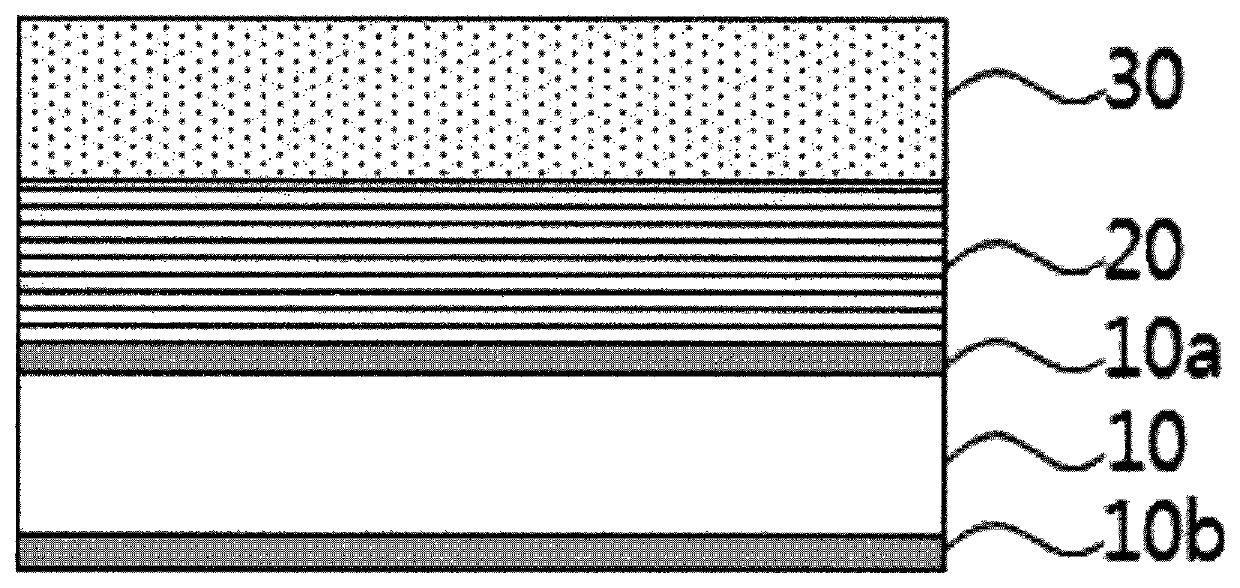Method for manufacturing lithium electrode
a lithium electrode and electrode technology, applied in the manufacturing process of electrodes, cell components, electrochemical generators, etc., can solve the problems of difficult handling, adversely affecting the lifetime properties of batteries, and high reactive lithium metal, so as to minimize the formation of oxide layers and uniform thickness
- Summary
- Abstract
- Description
- Claims
- Application Information
AI Technical Summary
Benefits of technology
Problems solved by technology
Method used
Image
Examples
example 2
[0069]A PVDF protective layer was formed in the same manner as in Example 1 except that PVDF was used instead of PVDF-HFP as the polymer for forming a protective layer.
experimental example 1
Lithium Electrodes
[0076]In Examples 1 and 2, preparation of normal lithium electrodes was identified.
[0077]On the other hand, in Comparative Example 1, an occurrence of wrinkle phenomenon caused from conducting a direct deposition process on the Cu current collector was identified. A wrinkle phenomenon is a phenomenon of folding and tearing, and it was seen that such a phenomenon occurred by conducting a direct deposition process on the thin Cu current collector.
experimental example 2
rformance
[0078]A Hohsen 2032 coin cell was manufactured using each of the lithium electrodes prepared in Example 1 and Comparative Examples 2 and 3 as a negative electrode, and cycle performance thereof was compared. LF-X2ON manufactured by LNF was used as a positive electrode, and, as an electrolyte liquid, a material obtained by adding 1 M LiPF6 and 1 wt % vinylene carbonate (VC) to a solution mixing fluoroethylene carbonate (FEC) and dimethyl carbonate (DMC) in a ratio of 2:8 vol % was used. LC2001 of SK innovation Co., Ltd. was used as a separator. Charge proceeded under a condition of 4.25 V CC / CV, and discharge proceeded under a condition of 3.0 V CC. C-rates during the charge and the discharge were 0.2 C and 0.5 C, respectively.
[0079]
TABLE 1Negative ElectrodeCycle Number (n)Efficiency [%]Example 126099.27Comparative15098.98Example 2Comparative15098.71Example 3
[0080]In the table, the cycle number was based on the cycle number at which discharge capacity ratio decreased to appr...
PUM
| Property | Measurement | Unit |
|---|---|---|
| thickness | aaaaa | aaaaa |
| thickness | aaaaa | aaaaa |
| thickness | aaaaa | aaaaa |
Abstract
Description
Claims
Application Information
 Login to View More
Login to View More - R&D
- Intellectual Property
- Life Sciences
- Materials
- Tech Scout
- Unparalleled Data Quality
- Higher Quality Content
- 60% Fewer Hallucinations
Browse by: Latest US Patents, China's latest patents, Technical Efficacy Thesaurus, Application Domain, Technology Topic, Popular Technical Reports.
© 2025 PatSnap. All rights reserved.Legal|Privacy policy|Modern Slavery Act Transparency Statement|Sitemap|About US| Contact US: help@patsnap.com

